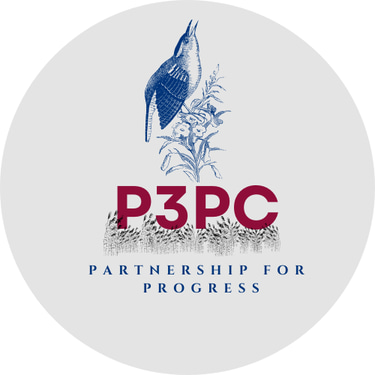From A to Z: A Step-by-Step Guide for City Managers to Initiate a Public-Private Partnership
A couple of short and smart steps for you to start are right here!
James Murphy
8/10/20254 min read


The role of a City Manager is to be a visionary and a pragmatist, an executive leader who can transform a council's vision into tangible, community-shaping projects. When it comes to large-scale infrastructure and development, the traditional public procurement model can often fall short, constrained by budget cycles and limited in-house expertise. This is where Public-Private Partnerships (P3s) become a powerful tool.
A P3 is not just an alternative financing mechanism; it's a strategic collaboration that leverages the strengths of both sectors to deliver a project more efficiently, on time, and often with greater long-term value. For a City Manager, successfully initiating a P3 requires a clear roadmap. This guide breaks down the process into four distinct phases, giving you the practical steps needed to navigate the journey from a vague idea to a thriving community asset.
Phase 1: Project Identification & Feasibility
Before you can build, you must first know what you're building and why. This initial phase is about due diligence and strategic alignment. The goal is to move from a general community need to a well-defined project that is a strong candidate for a P3.
Your Action Steps as a City Manager:
Establish a Shared Vision: Start with the City Council. What are the top priorities? A new water treatment plant? A downtown revitalization? A new sports complex? A P3 should always serve a critical public purpose.
Initial Project Screening: Not every project is a good fit for a P3. Conduct a high-level screening to determine if the project has a potential revenue stream, an opportunity to transfer significant risk to the private sector, and a scope that can benefit from private-sector innovation.
Assemble a Core Team: You cannot do this alone. Build a project team with key internal stakeholders, such as your Finance Director, City Attorney, and Public Works Director. At this stage, it's also a best practice to engage external P3 advisors—legal, financial, and technical experts who can provide specialized knowledge that your in-house team may lack.
Conduct a Feasibility Study: This is the most critical step in this phase. The study should include a "Value for Money" (VfM) analysis, which compares the P3 option to the traditional public procurement model. A robust VfM analysis provides a clear, data-driven justification for pursuing a P3, making it easier to gain political and public support.
Phase 2: Project Development & Procurement Strategy
With a clear vision and a confirmed business case, the next step is to create the blueprint for the partnership. This phase is about preparing the project for the market and establishing a fair and transparent procurement process.
Your Action Steps as a City Manager:
Strategic Risk Allocation: Work with your advisors to identify all potential project risks—from construction delays and cost overruns to long-term operational performance. The fundamental principle of a good P3 is allocating each risk to the party best equipped to manage it.
Conduct Market Sounding: Before issuing a formal request, engage with the private sector. This can be done through a Request for Information (RFI) or by holding industry forums. This "market sounding" provides invaluable feedback, helps you refine your project scope, and gauges private-sector interest.
Choose a Procurement Method: This is a key strategic decision. You'll need to decide on the best procurement approach—a Request for Qualifications (RFQ) followed by a Request for Proposals (RFP), or a one-stage process. The method you choose will depend on the project's complexity and your city's specific goals.
Develop a Stakeholder Engagement Plan: The public's trust is paramount. A P3 can be a complex and misunderstood concept. Develop a proactive communication plan to keep elected officials, community members, and internal staff informed and engaged throughout the process.
Phase 3: The Procurement Process
This is the formal, competitive stage where you invite private partners to present their solutions. Your role shifts from planning to management, ensuring the process is fair, transparent, and yields the best possible partner.
Your Action Steps as a City Manager
Draft a Clear RFP: The Request for Proposals is the most important document you will produce. It must be detailed, yet flexible, clearly articulating your city's needs and desired outcomes while allowing the private sector room for innovative solutions.
Manage the Competitive Environment: Ensure that all potential bidders have equal access to information. Lead bidder conferences and manage the Q&A process to maintain transparency.
Lead the Evaluation Team: Oversee the evaluation of all proposals. The criteria for selection should be comprehensive, including not just the financial bid but also the technical design, the qualifications of the private-sector team, and their long-term operational plan.
Negotiate the Final Agreement: Once a preferred bidder is selected, lead the final, detailed contract negotiations. This phase is about hammering out the specifics of the long-term relationship, including performance metrics, payment structures, and dispute resolution mechanisms.
Phase 4: Contract Award & Post-Award Management
With a signed contract, the project moves into the construction and operational phases. Your role evolves once more, from a project initiator to a long-term contract manager, ensuring the partnership delivers on its promises.
Your Action Steps as a City Manager
Secure Final Approval: Present the final contract to the City Council for their official approval, clearly outlining the project's value and the benefits of the P3 structure.
Establish a Contract Oversight Team: The City’s responsibility doesn't end with a signed contract. A dedicated team must be in place to monitor the private partner's performance against the contract's Key Performance Indicators (KPIs).
Maintain the Partnership: A P3 is a decades-long relationship. Foster an atmosphere of communication and collaboration to ensure both parties remain aligned on the long-term vision and goals.
Conclusion
A well-executed P3 is a powerful vehicle for municipal growth. It can accelerate project delivery, transfer risk, and unlock new sources of funding. However, its success hinges on clear leadership and a methodical approach. By following this step-by-step guide, City Managers can confidently lead their communities through the P3 process, turning ambitious visions into lasting realities.
Ready to take the first step? We have a team of experts ready to help you evaluate your project's P3 readiness. Contact us today to start the conversation.
Connect
Partnering for a better Municipalities everywhere.
#IMPACT
#SmartCommunity
© 2025. All rights reserved.
